A’strict: the South Korean digital art collective bringing nature to urban life
As part of our Generation Generative series, we spotlight a’strict, the artistic unit of South Korean digital media design company d’strict, whose immersive art aims to bring viewers closer to nature

A colossal wave crashing onto the two-sided rectangular LED display on the external façade of COEX in Seoul’s Gangnam district was a sight that captivated many Seoulites. They stopped to stare, mesmerised, into a three-dimensional tank of screens that offered a cathartic visual experience.
On the other side of the world, a larger-than-life waterfall flowed in the middle of Times Square in New York, stealing the show amid the visual noise of its surroundings.
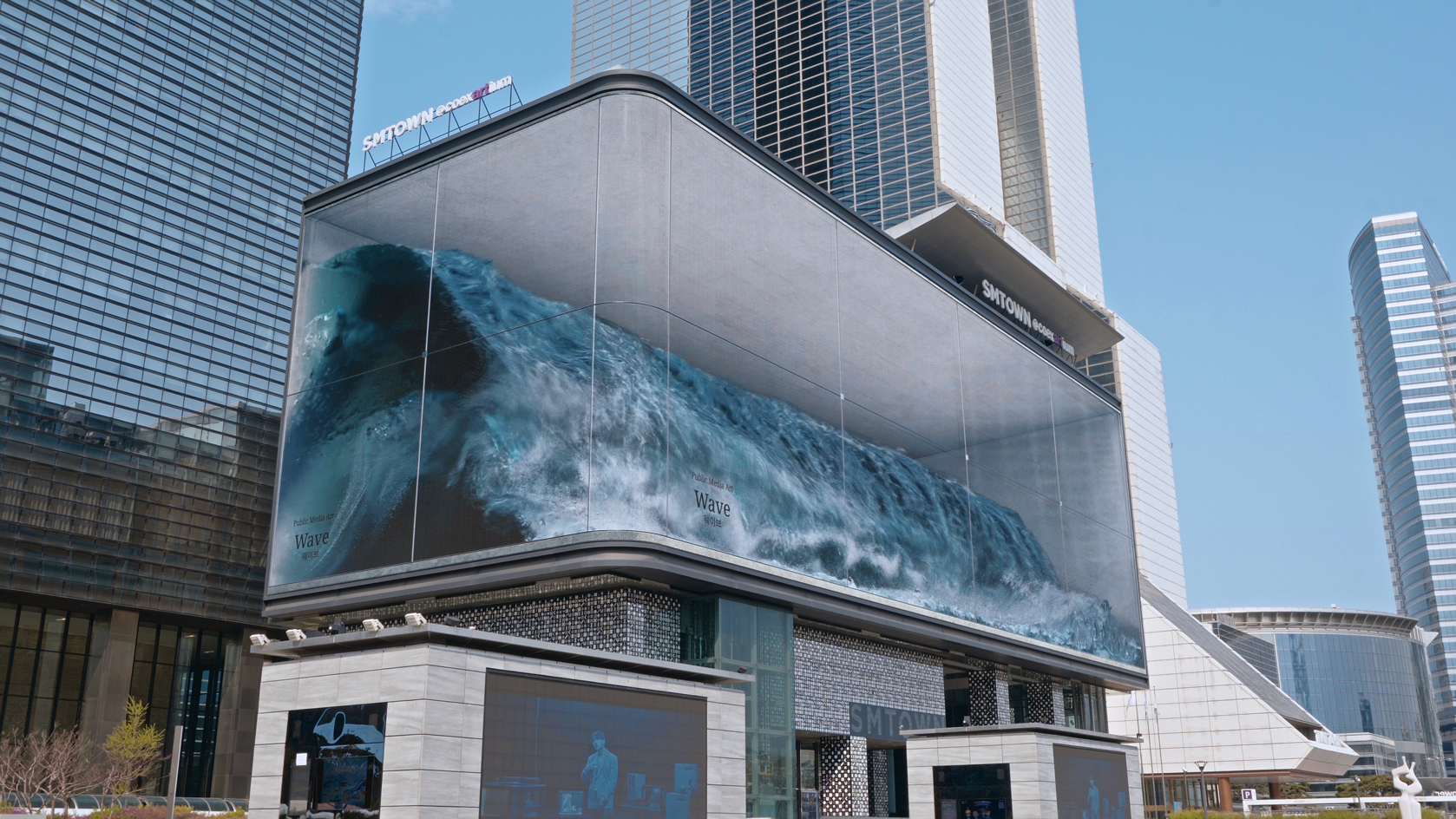
Wave, by a'strict at COEX Seoul
WAVE (2020) and Waterfall-NYC (2021) by South Korean digital media design company d’strict are two of many public artworks that astonished crowds amidst the pandemic and catapulted the firm to fame with their instantly-recognisable, captivating aesthetic. Both pieces were created using anamorphic illusion, a type of projection technique used to create an illusion of depth and three-dimensionality.
While d’strict now frequently collaborates with big-name brands, a’strict – the artistic arm of the company – is open to digital media artists from both within d’strict and outside. A’strict functions as an art collective creating non-commercial artwork with more creative freedom.
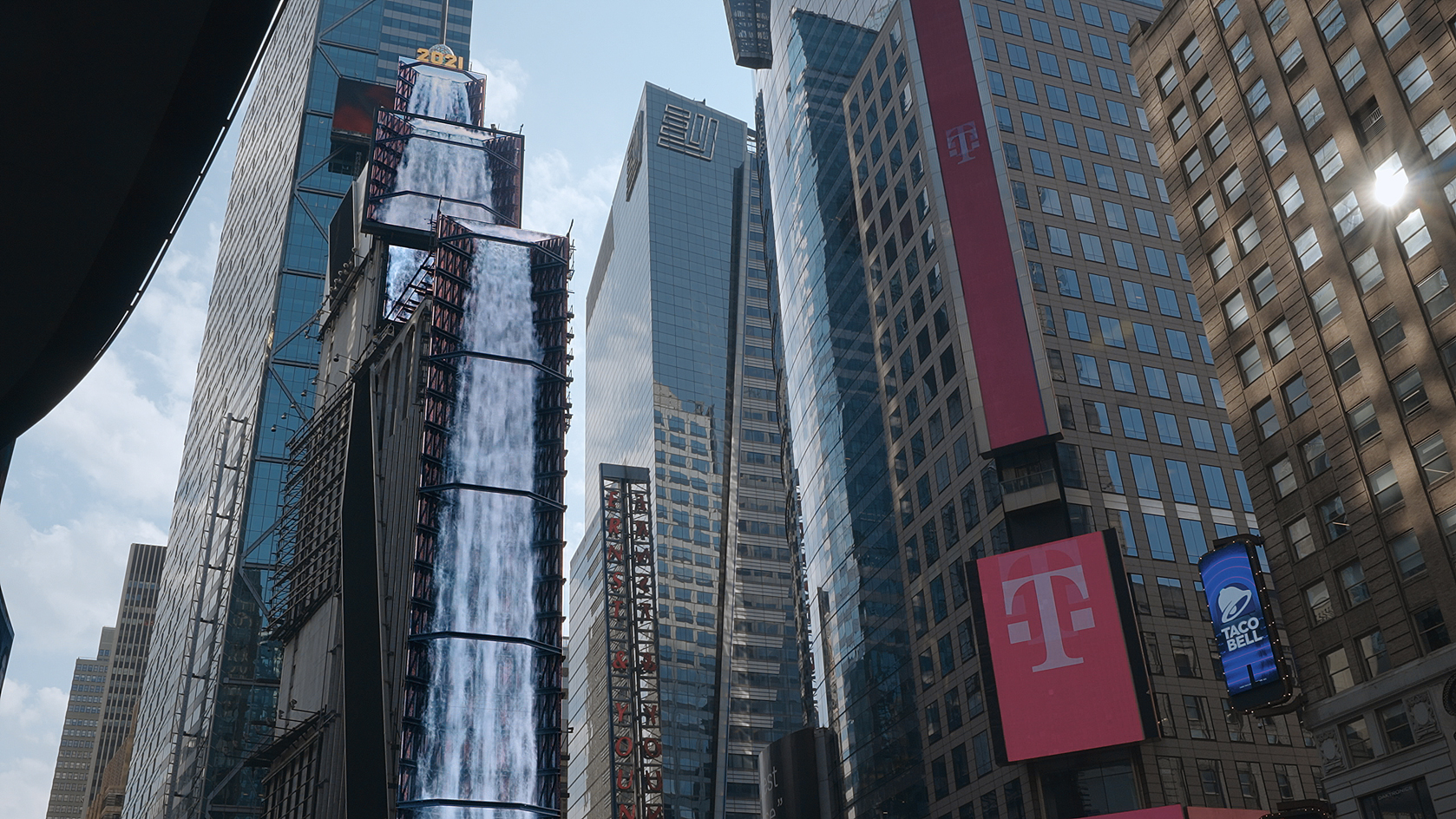
Waterfall-NYC, by a'strict, displayed in Times Square, New York
‘Among our projects, WAVE was the most popular. I think it came from the unexpectedness of the artwork in the middle of the city. No one would expect a wave to be there and to be so real,’ said Sang Jin Lee, vice president at d’strict. ‘Timing worked well for us because we became well-known during the pandemic. Waves and waterfalls in the middle of the city provided solace and were a stress reliever for many, in times of frustration. I think this made our work connect with the audience,’ she says.
Starry Beach (2020), exhibited at Kukje Gallery in Seoul in September 2020, is an example. Maximising sight and sound, a’strict created an intuitive and immersive beach experience, which enthusiastic visitors queued for hours to see. Morando (2021), which was shown at the much-acclaimed ‘LUX: New Wave of Contemporary Art’ show at London’s 180 The Strand, uses an X-ray technique to depict infinitely blooming peonies and the ethereal cycle of life.

A'strict, Morando, in 'Lux' at 180 Studios, 2021
‘A’strict focuses on intuitive artwork which can be enjoyed without prior knowledge of art and something that can resonate with people’s everyday lives,’ Lee explains. ‘Nature is a theme that people can intuitively resonate with and immerse in, and also gives them a sense of comfort.’
Receive our daily digest of inspiration, escapism and design stories from around the world direct to your inbox.
Through immersive digital art installations, both d’strict and a’strict aim to bring nature closer to people’s lives. D’strict’s own exhibition space, Arte museum, is structured around nature-orientated themes such as ‘beach’, ‘wave’, ‘waterfall’, ‘forest’, ‘flower’, ‘garden’, and ‘jungle’, to name a few. The museums are currently located in Jeju, Busan, Gangneung and Yeosu in Korea, with d’strict’s first overseas branch having debuted in Hong Kong in October 2022. Plans for 2023 include museums in Las Vegas, New York, Los Angeles, and Chengdu.

A'strict, Forest, at the Arte Museum in Gangneung
As well as anamorphic illusion, generative art technology is also an integral part of a’strict’s work. A recent collaboration with crypto artist duo Hackatao resulted in Spirit Forest Incanto, in which a reindeer changes its colour subject to the movement and behaviour of visitors. The colour of the reindeer – red, green, yellow, etc. – is responsive to how visitors walk towards them or touch them. Using code, the reindeer can generate multiple appearances that shift based on subjective input.
A’strict will soon launch a flower project titled Mugunghwa, which uses generative technology to produce multiple variations of Korea’s national flower. The aim is to create 815 different variations of the flower to be sold as NFT editions, meaning that each collector can own a unique version. The flower will be incubated and exhibited from the seed stage in one museum, then presented as a blossomed flower in a travelling show across Arte museums across Korea.
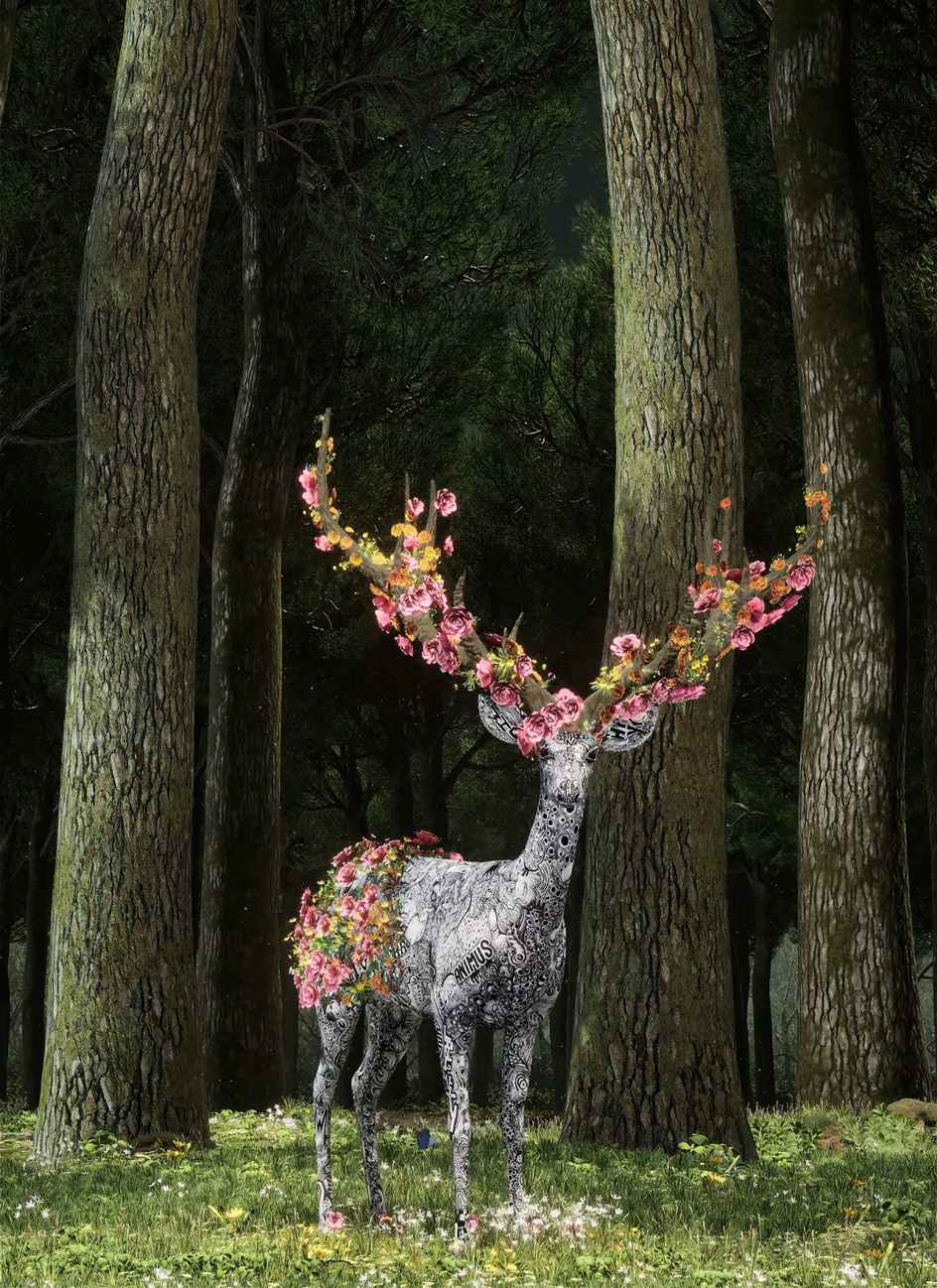
Arte Meta and Hackatao, Spirit Forest Incanto
‘Using a technology called real-time engine, the flower will be coded to bloom and die continuously and change its colours. The characteristic of generative art is that there is no beginning and end. The work keeps moving,’ said Lee.
‘For example, if we code to create five red flowers in five types of shapes with five different stems, we will have multiple random variations possible within this setting. We can also program it to reflect the reality, such as when it snows, the flower will be white, if it rains, it will turn yellow and so on.’
D’strict also has a crypto art project arm called Arte Meta under which these NFT projects are handled.
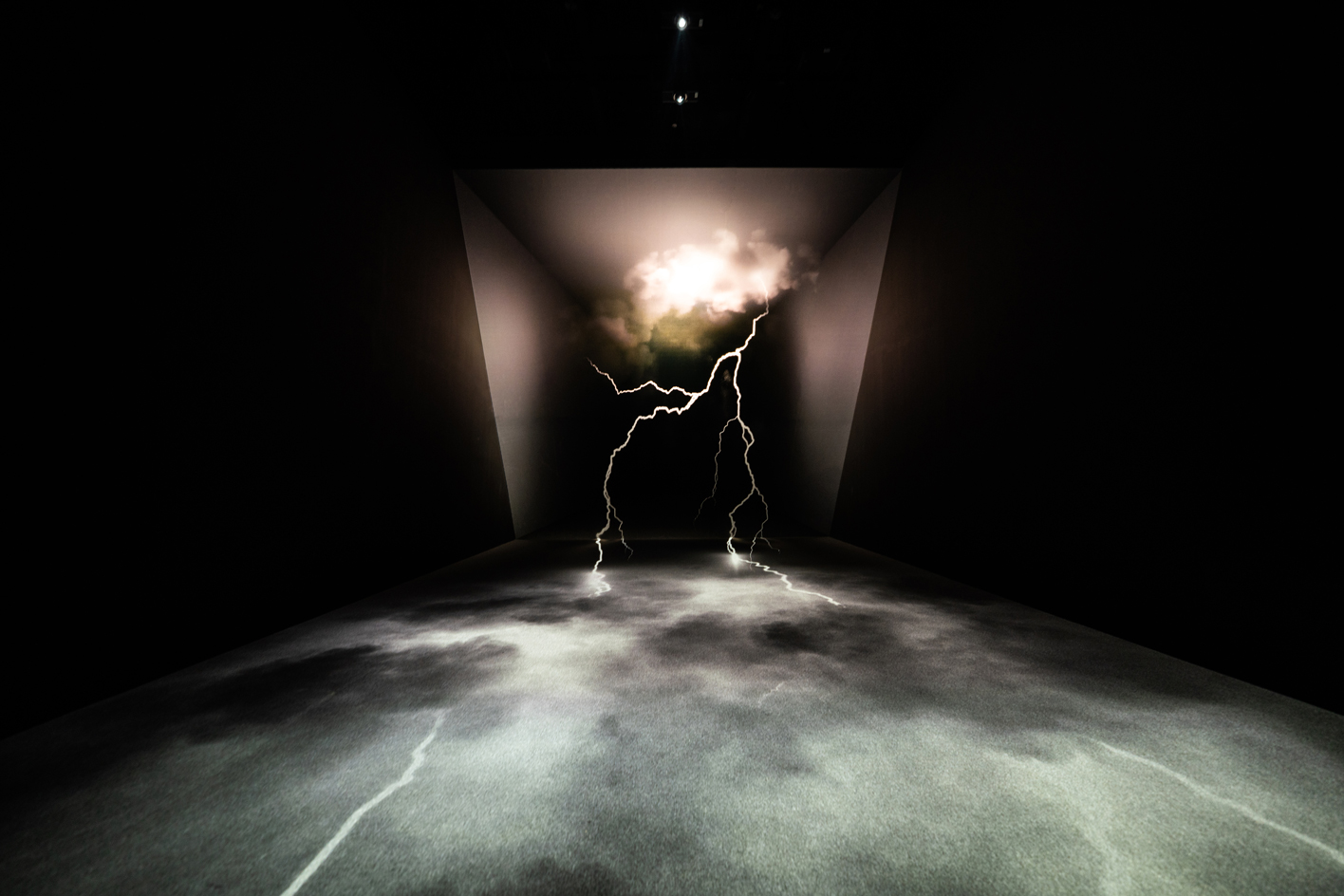
A'strict installation view at the Arte Museum in Gangneung
The digital revolution in generative art emerged due to NFTs, says Lee. ‘For NFT artworks, many of them have to be mass-produced and often each one represents each person’s identity so each work would have to be unique. Unfortunately, it is difficult to create 10,000 different variations of an artwork,’ she said.
‘People started using generative technology to produce random variations of works. What differentiates generative art from randomness, however, is that combinations will be made from pre-coded settings.’
D’strict’s next project will touch on environmental issues. ‘Ice’ will be a work of anamorphic illusion of the arctic melting, exhibited at one of its Arte museums. ‘It won’t be an explicit statement on saving the environment, but it can send a message indirectly,’ said Lee.
SuhYoung Yun is a writer, journalist, and creative director active in the cultural field, especially focused on travel, design, art, architecture and food. She is the author of Switzerland: A Cultural Travel Guide (스위스 예술 여행), published in 2025 by Ahn Graphics, a renowned design publisher in South Korea. Yun was formerly the Cultural and Public Affairs Officer at the Embassy of Switzerland in Seoul, a position which inspired her to write the cultural travel guide.
-
 Wallpaper* Architect Of The Year 2026: Lina Ghotmeh, France
Wallpaper* Architect Of The Year 2026: Lina Ghotmeh, FranceAsked about a building that made her smile, Lina Ghotmeh – one of three Architects of the Year at the 2026 Wallpaper* Design Awards – discusses Luis Barragán’s Capuchin Convent Chapel and more
-
 What do creatives pin to their walls? Artists from Tracey Emin to Michael Stipe reveal all
What do creatives pin to their walls? Artists from Tracey Emin to Michael Stipe reveal allAn exhibition at Incubator gallery, London, asks 42 creatives what is tacked to their studio walls – here are some of their pin-ups
-
 A local’s guide to Florence: 9 unmissable haunts
A local’s guide to Florence: 9 unmissable hauntsOur contributing editor Nick Vinson spends half the year in Florence. Here, he takes us on a tour of his don’t-miss diversions
-
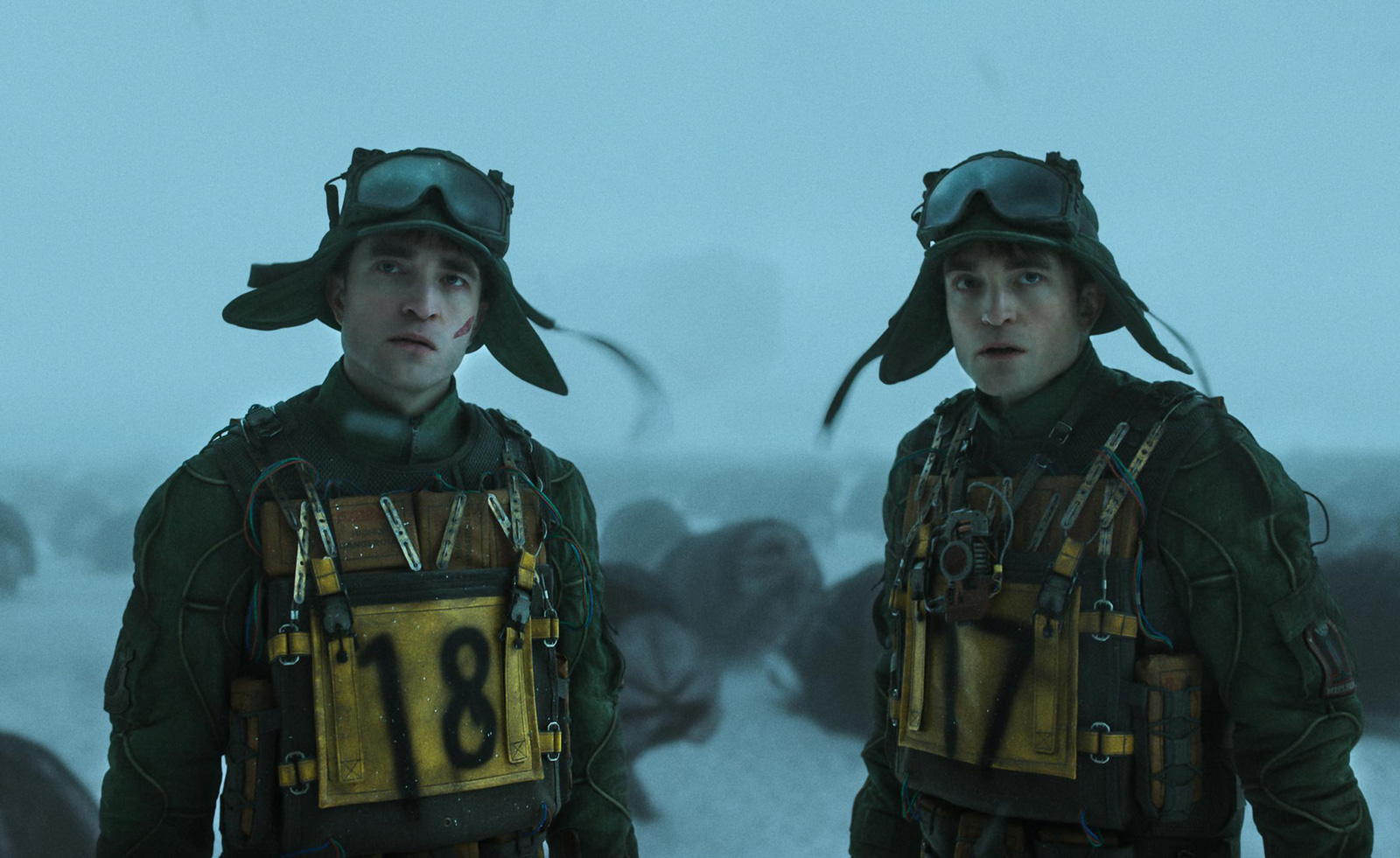 Bong on Bong: the Mickey 17 and Parasite director looks back on his career
Bong on Bong: the Mickey 17 and Parasite director looks back on his careerAs sci-fi romp Mickey 17 prepares to hit the big screen, Oscar-winning director Bong Joon Ho reflects on his career so far
-
 Photographing free time in South Korea: rare days off captured in new book
Photographing free time in South Korea: rare days off captured in new bookFree time is hard-earned in South Korea. In Seunggu Kim's new photography book 'Better Days,' he captures the beauty of the country at play
-
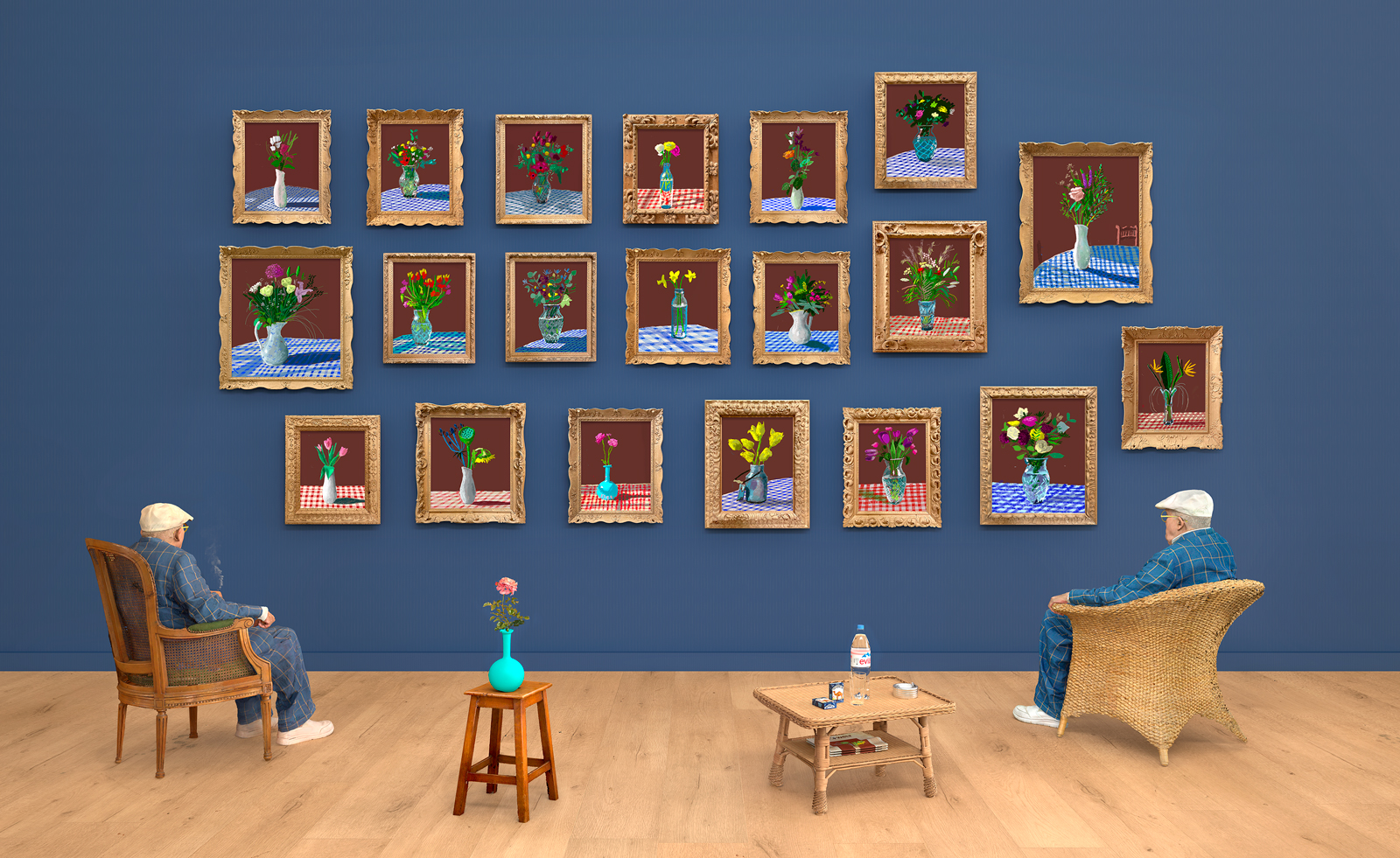 David Hockney plays with our perception of fine art in Palm Springs
David Hockney plays with our perception of fine art in Palm Springs'David Hockney: Perspective Should Be Reversed' is currently on show at the Palm Springs Art Museum
-
 First look: Sphere’s new exterior artwork draws on a need for human connection
First look: Sphere’s new exterior artwork draws on a need for human connectionWallpaper* talks to Tom Hingston about his latest large-scale project – designing for the Exosphere
-
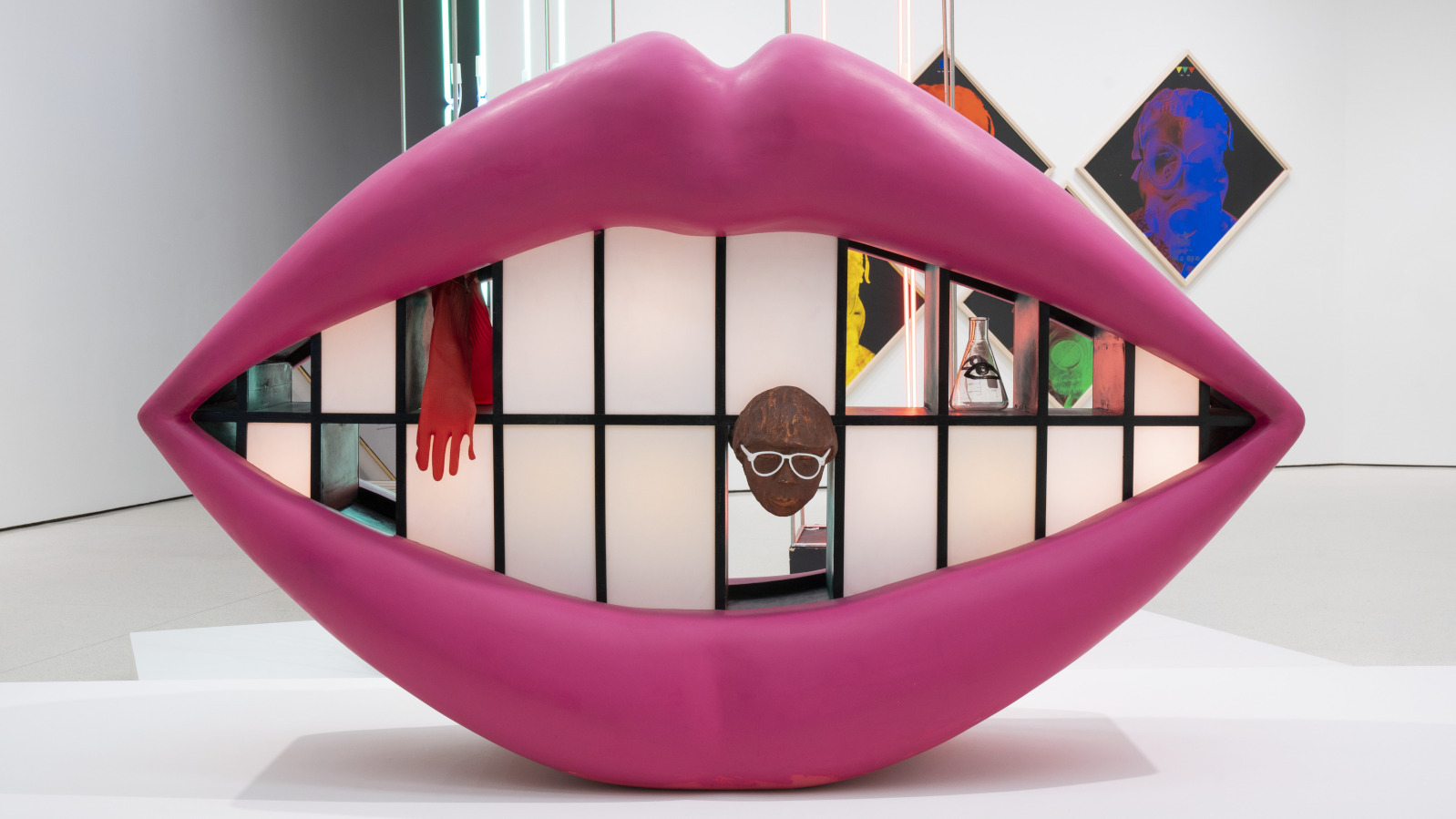 An avant-garde Korean art movement resurfaces in LA
An avant-garde Korean art movement resurfaces in LALA's Hammer Museum gets its teeth into avant-garde Korean art with ‘Only the Young: Experimental Art in Korea, 1960s–1970s’
-
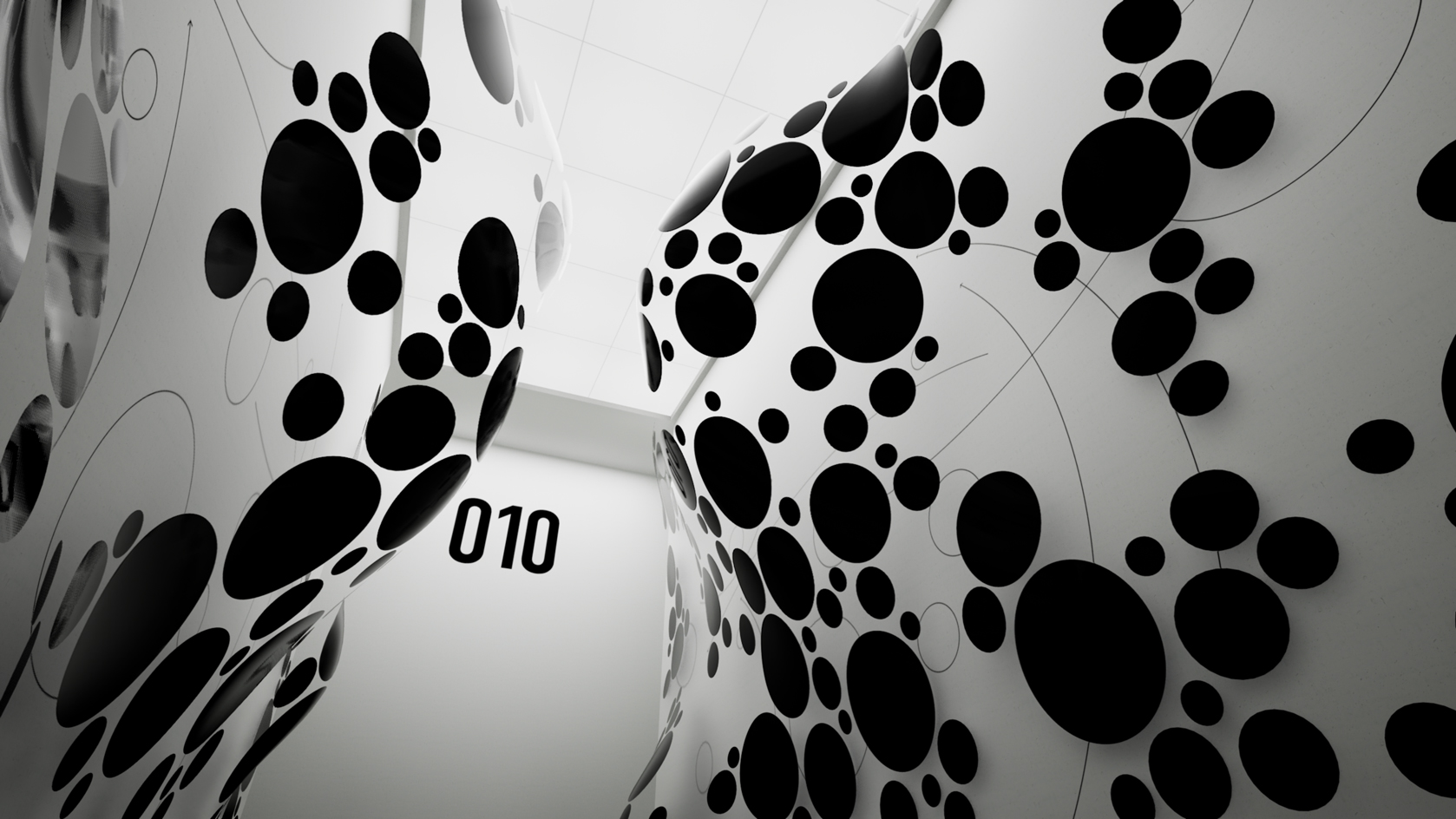 Maxim Zhestkov’s mindbending VR art museum functions like a video game
Maxim Zhestkov’s mindbending VR art museum functions like a video game‘Modules’ by digital artist Maxim Zhestkov is a VR art gallery where impossible physics feels palpable. We visit the artist’s London studio to experience the whole thing
-
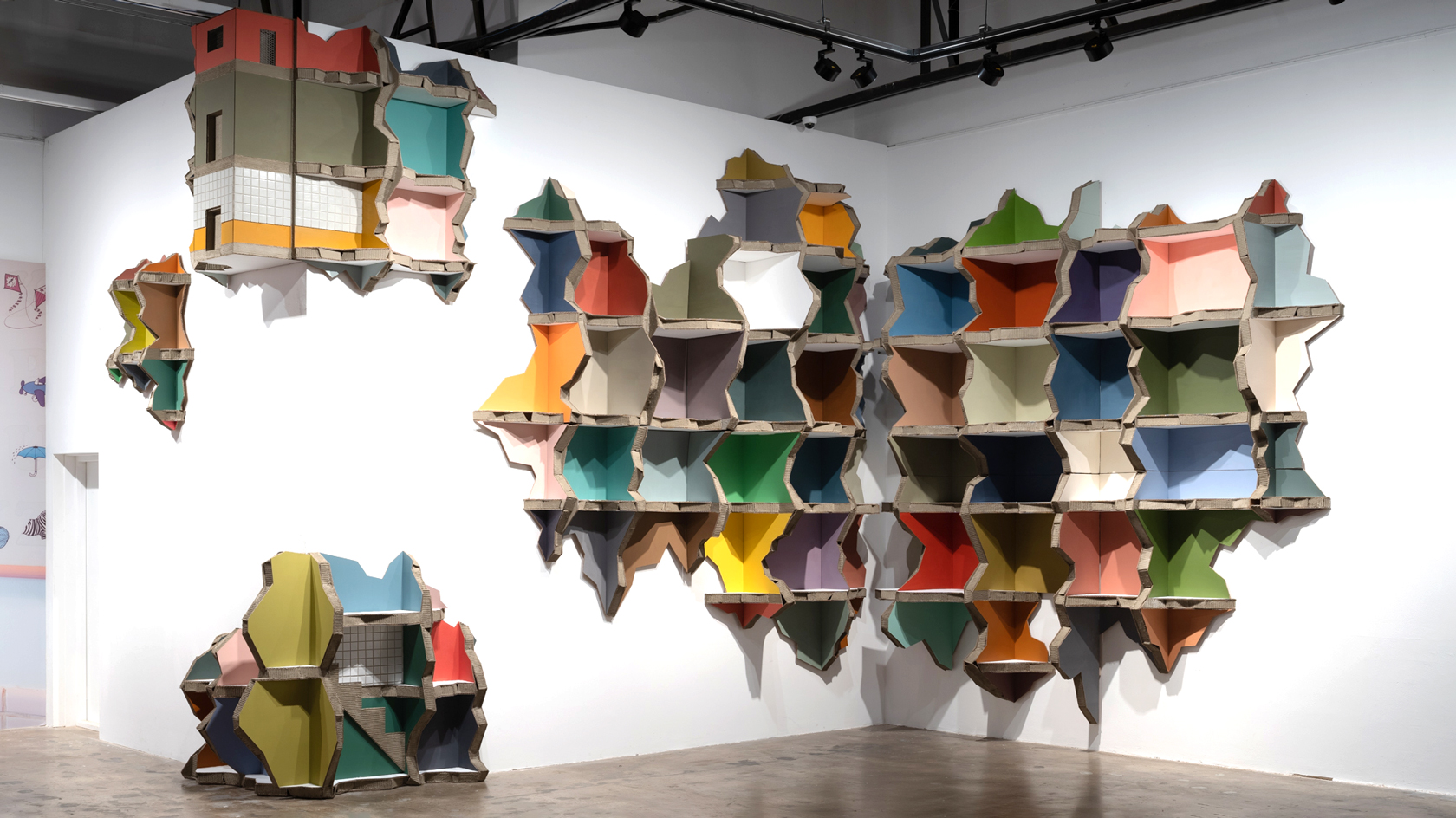 14th Gwangju Biennale review: a stage for new voices and ancient ideas
14th Gwangju Biennale review: a stage for new voices and ancient ideasSouth Korea’s 14th Gwangju Biennale (until 9 July 2023) takes water as its central theme, in which climate, Daoism, historical trauma, local craft and voices of the marginalised float to the surface
-
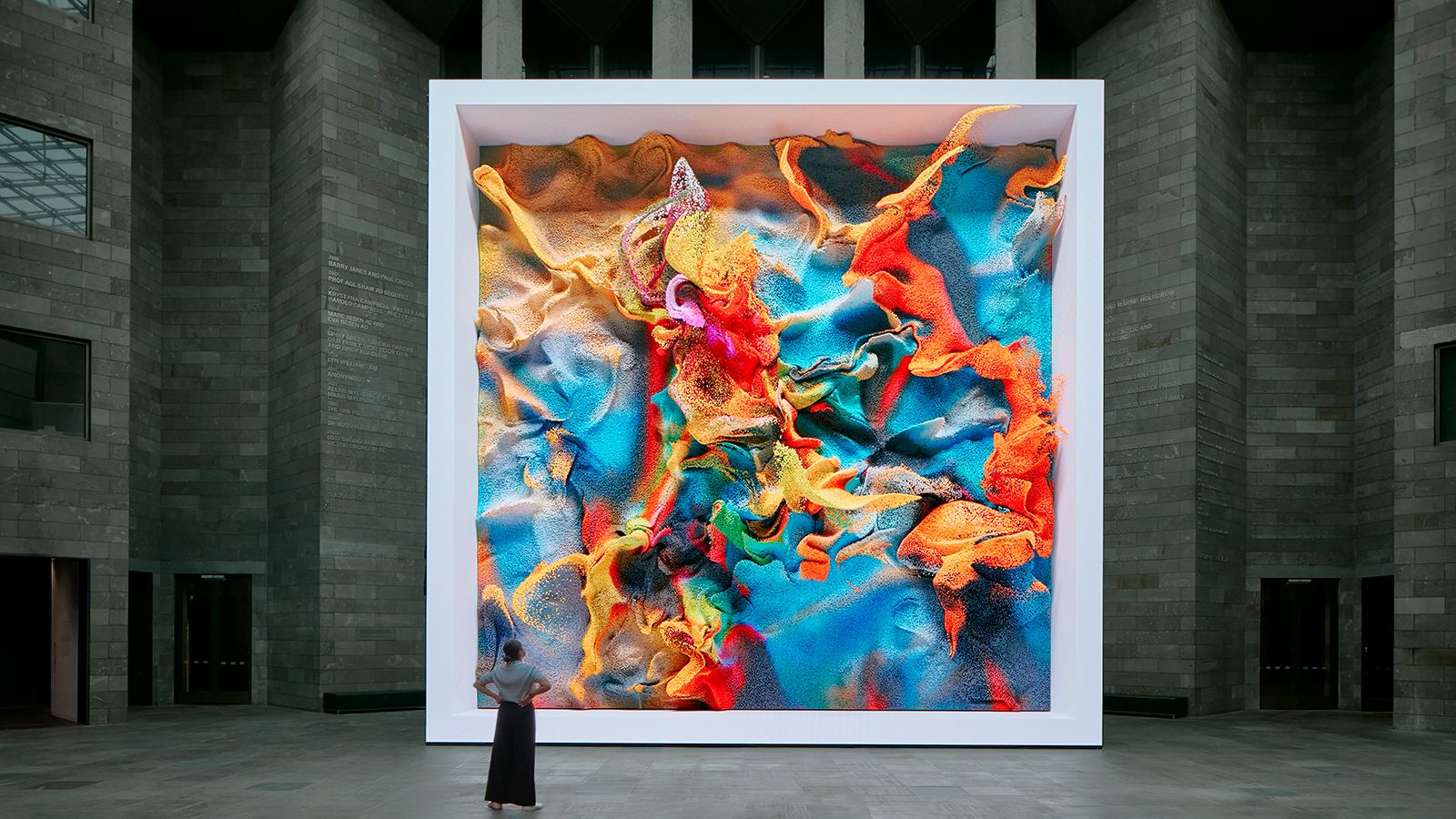 Enter the mesmerising, AI-driven world of artist Refik Anadol
Enter the mesmerising, AI-driven world of artist Refik AnadolRefik Anadol’s masterly use of data sets and AI models allows him to create dazzling ‘living paintings’, on display in MoMA’s Gund Lobby until 5 March 2023